




We love Spring festival season, as we get the chance to talk with many of you at area festivals. Be sure to visit the Cape Fear’s Going Green online calendar of green events: it’s on the “Calendar” tab on GoingGreenPublications.com. You don’t want to miss any fun events! If you have an environmental event you’d like to propose we add, send us an email or complete the form at the bottom of our calendar page.
Our featured article this issue describes ways that green infrastructure can safeguard community health. I encourage you to read about the methods that can be used to offset the effects of our changing weather. There are local organizations working on all these methods, and they would welcome more help. You could help plant trees, or connect with elected representatives to protect the trees we have. If you’ve been looking for a way to make a difference, there are many ways to help your home community.
Pervious pavement is mentioned in the article, and I remember the first time I saw it in action. My local YMCA on Market Street had just installed a section of pervious pavement in their parking lot. It might have been during the Solar Tour several years back, and I went for a scheduled demonstration of how it worked. The new pavement was textured, and looked like a dove-gray Rice Krispie treat. The demonstration was simple: someone held a water hose over the pavement and turned on the water. When the water hit the pavement it disappeared instantaneously between the pebbles. I’d read about the concept, but seeing it in person for the first time astonished me.
I wish you a delightful Spring.
— Valerie L. Robertson Editor
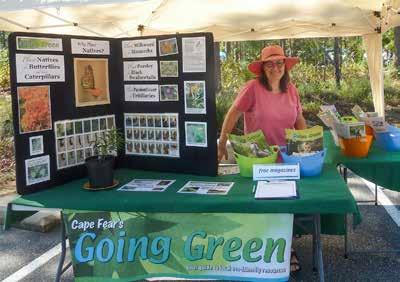
3 Using Greenery to Safeguard Community Health in the Face of Climate Change
6 Your Environment—The EPA’s New Mission, Explained
7 Solar 101: Harnessing the Power of the Sun
8 35th Annual Wilmington Earth Day Festival
9 WAVE Transit—Ride the Bus Anywhere for Free April 26
10 First Annual Cape Fear Women’s Birding Festival Paves Way For a Second
11 Inaugural Bird Bonanza May 3 at the Arboretum
12 World Migratory Bird Day
13 May is National Bike Month—Safe Cycling Tips from Go Coast 16 Recipes 19 Marine CSI Expands its Watershed Program
21 WIN Picks Recipients for 2024 Grant Awards 23 Green News
Crossword 31 Reading List for 2025 Environmental Book Club
32 Kids Korner—Virginia Opossum
Front Cover: Wetlands serve as a refuge for wildlife such as this Snowy Egret. Adobe Stock_440436337
Cape Fear’s Going Green is a quarterly publication promoting eco-friendly resources and lifestyles in the Lower Cape Fear River Basin.
Publisher & Editor in Chief: Valerie Robertson
Contributing Editor: Shelby Diehl
Eugene Contributing Editor: Mary Robertson
Advisors & Editorial Contributors: Maad Abu-Ghazalah, Kimberly Belfer, Carolyn Caggia, Shelby Diehl, Kayla Dorsey, Sharon Funderburk, Traci Hobson, Morgan Kondratick, Sally Smits Masten, Leigh McKenzie, Shannon Bradburn Pragosa, Beth Saile and Philip S. Wenz.
2010 YWCA Women of Achievement Award for the Environment
Sister City: Eugene, Oregon (Voted “Greenest City” 2006 by The Green Guide)
Cape Fear’s Going Green Going Green Publications P. O. Box 3164 • Wilmington, NC 28406 (910) 547-4390 publisher@goinggreenpublications.com www.goinggreenpublications.com
Editorial: If you have story ideas or calendar items to suggest, email us at editor@goinggreenpublications.com, or call (910) 547-4390.
Advertising information: Email advertising@goinggreenpublications.com.
Cape Fear’s Going Green is distributed for free throughout Brunswick, Columbus, New Hanover, Onslow and Pender counties. A partial map of locations appears at https://arcg.is/1WWi0y. If you have a business and would like to receive multiple copies for the public, please contact us. The views and opinions expressed in articles in this magazine are those of the authors and do not necessarily reflect the official position of this publication.
by Morgan Kondratick and Shelby Diehl
The Cape Fear region is no stranger to inclement weather events like hurricanes and extreme precipitation. While these are common phenomenons, the increased frequency of these intense rain events has exposed aging and inadequate infrastructure meant to combat flooding. Heavy rainfall strains already stressed drainage systems and creates pockets of flooding in vulnerable and ill-equipped neighborhoods. Many communities lack the resources to address this urban flooding, mainly in low-income areas where mitigation efforts are slow coming.
Urban flooding is caused by a heavy influx of water resulting from extreme rainfall or storm surges that overburden drainage systems and cause water to accumulate in areas it should not occupy. As the migration of large swaths of people to urban centers trends upwards, urban
flooding is an issue that should garner attention. Urban flooding is becoming increasingly severe due to rapid urbanization and climate change.
With increased urbanization, we see expansion into high-risk floodplains, disruptions to natural water drainage patterns, and the replacement of permeable, absorbent land with cement and other impervious surfaces. Simultaneously, climate change drives urban flooding in two main ways. The first is significant shifts in precipitation patterns and the increased frequency and severity of extreme weather events. The second is that warming temperatures cause sea water expansion and melting of ice caps, which raises sea levels.
In the past few decades, coastal communities in North Carolina have experienced increased flooding. With rain patterns continuing to shift and intensify, this trend will continue. Wilmington is one

of these and is at high risk of experiencing more frequent flooding events as climate changes and urban flooding becomes more pressing.
Then there’s hurricane season. In 2018, Wilmington sustained over $16 billion in structural damages to almost 74,000 structures resulting from the flooding caused by Hurricane Florence. With shifts in climate, natural disasters like this can be expected to increase in severity and frequency. It is projected that Wilmington residents will likely have their day-to-day lives disrupted over the next 30 years due to flooding. Approximately 31% of all properties in Wilmington have a larger than 26% chance of being affected by flooding within the next 30 years.
Flooding is associated with many negative consequences for community health and safety. These consequences can be grouped into four broad categories:
Standing water caused by flooding acts as a breeding ground for mold and bacteria. Floodwater mobilizes pathogens, increasing and altering patterns of disease transmission. The growth of mold and fungi can aggravate symptoms of allergies, asthma and lung diseases like chronic obstructive pulmonary disease. This exposure to increased levels of bacteria and mold spores can cause throat, nose, eye and skin irritation, as well as general deterioration of respiratory health.
Flooding subjects communities to physical hazards. A large portion of floodrelated deaths are caused by motor vehicle accidents or drowning. People are also commonly injured during flood preparation or clean up or can be damaged by debris during a flood.
(continued on page 4)
Safeguard Community Health... (continued from page 3)

Mold grows in a home due to excessive moisture.
Floods are traumatic events that can affect the long-term mental health of community members. Post-traumatic stress disorder (PTSD) is 23% higher among those who have experienced an extreme flooding event compared to the general population. Anxiety and depression symptoms also increase post-flood. Children are particularly vulnerable to mental health challenges because they have fewer coping strategies and are more prone to rumination.
Flooding disrupts essential community services, potentially preventing community members from accessing transportation to work, the grocery store, the pharmacy, appointments, etc. It can also damage community spaces where people gather to recreate or socialize, further disrupting people’s daily routines and socio-emotional health.
Given the wide range of negative consequences flooding has on community health, it is essential that coastal cities like Wilmington investigate and implement innovative, economically and ecologically viable flood prevention methods.
Green infrastructure is an environmentally friendly, economically feasible, and effective flood water retention method that can safeguard communities’ health— and we can even take it one step further. If green infrastructure is implemented strategically and considerately, it can be used as an equity tool to lift up disadvantaged or disenfranchised communities.
Studies conducted on urban flooding across the US have found that lowerincome individuals are often forced to live in areas subjected to more flooding. When flooding occurs more frequently or intensely, bringing sweeping negative health consequences to these communities, they often lack the resources they need to recover fully and swiftly.
Currently, greening tends to follow patterns of gentrification, further disadvantaging low-income groups experiencing major flood events. However, if greening is implemented strategically and includes input from community members, it can be an effective revitalization tool that offsets urban flooding. Additionally, increasing greenery would raise property values, improve air quality, improve neighborhood aesthetics and—if implemented on a large scale—provide recreational spaces.
With that, let’s take a look at some of these greening methods:
Wetlands act as natural water treatment facilities, creating urban habitats and wildlife refuges for native species. However, wetlands are being destroyed at approximately 60,000 acres per year due to agriculture, construction, and resource extraction. Constructed wetlands can counter accelerated destruction rates and restore the natural processes that remove and transform pollutants through biological, chemical and physical processes. Still, they require the cooperation of landowners to forfeit land for restoration.
Forests slow, capture and store stormwater while absorbing carbon dioxide, hindering accelerated climate change and providing wildlife habitat. Trees benefit city dwellers by reducing temperatures and noise, raising property values and increasing biodiversity. City forests come in two variations: natural remnants and new growth planted around existing development. However, forests share the same limitation with wetlands in that conservation agreements may be needed to acquire land to plant on.
Rain gardens restore water balance by capturing, retaining, and enhancing infiltration in urban areas, allowing clean water to nourish local aquifers. This helps urban spaces adapt to the shifting conditions caused by climate change, including flash flooding. Rain gardens are best suited for small sites and neighborhoods, making this a good option for homeowners wanting to mitigate flooding without sacrificing aesthetics.
Retention ponds are natural or manmade depressions designed to attenuate runoff and treat water quality during rainfall events. They subsequently release treated water once the risk of flooding has subsided. Unlike other green infrastructure methods, a well-designed retention pond will include an emergency spillway to ensure safe overflow if the storage capacity is exceeded. These well-maintained ponds can provide aesthetic and ecological benefits to the surrounding landscape.
Permeable pavement reduces the volume of annual runoff by roughly 60%, lessening peak flow and improving water quality in the process. This is suitable for private and public stormwater management, proving especially useful in developed areas that cannot handle post-construction stormwater. However, while permeable pavements can replace most traditional impervious pavements like local roadways, sidewalks, parking lots, and bike paths, they are not well-suited for high-speed and high-volume roads.
Green roofs have been favored for improving ecological enrichment, urban biodiversity and air quality, reducing heating and cooling needs, the heat island effect, and water demand. This method of green infrastructure assists with stormwater management by raising the rate of evapotranspiration and infiltration. The main point of contingency is the slope of
(continued on page 5)
Safeguard Community Health... (continued from page 4)
the existing roof, given that the garden must be planted on flat or gently sloping rooftops. While this limits accessibility, maintenance isn’t complicated.
Every hurricane season, we are reminded of the threats climate change poses – from the intense rainfall events that flood residents out of their homes to superstorms that harm our community members. This is only the beginning. The consequences of climate change will only continue to worsen unless we make crucial changes to our communities. By unifying to implement green infrastructure, we can generate sweeping positive change that safeguards ecosystems, health and uplifts disadvantaged communities, securing a brighter future for generations to come.

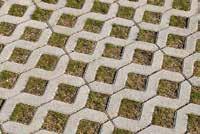
The words “pervious” and “permeable” are often used interchangeably when discussing pavers, but there’s a slight difference in how they function. Pervious pavers are specifically designed to allow water to percolate through the paver itself, while permeable pavers allow water to pass around the paver, through the joints filled with gravel or aggregate. Both types are designed to promote water infiltration into the soil and reduce runoff.

Sources:
books.google.com/books?id=5DiQDwAAQBAJ cdr.umd.edu/sites/cdr.umd.edu/files/resource_documents/ COMPRESSEDurban-flooding-report-online-compressed-0319.pdf coast.noaa.gov/data/docs/digitalcoast/gi-econ.pdf doi.org/10.1080/07011784.2015.1128854 doi.org/10.1080/19463138.2013.878348 doi.org/10.1098/rsta.2019.0216 doi.org/10.1111/disa.12256 doi.org/10.1136/bmj.p1331 doi.org/10.3238/arztebl.m2022.0403 epa.gov/climate-indicators/climate-change-indicators-coastalflooding#:~:text=Rising%20sea%20level%20inundates%20 low,estuaries%20and%20nearby%20groundwater%20aquifers epa.gov/sites/default/files/2021-01/documents/threats_to_wetlands. pdf
epa.gov/system/files/documents/2021-11/bmp-permeable-pavements.pdf
mdpi.com/2071-1050/11/22/6318 mdpi.com/2071-1050/13/23/13231 nwrm.eu/measure/retention-ponds#:~:text=Ponds%20can%20be%20 designed%20to,and%20treated%20in%20the%20pond preventionweb.net/news/mapping-future-climate-change-andflooding-coastal-north-carolina riskfactor.com/city/wilmington-nc/3774440_fsid/flood sciencedirect.com/science/article/abs/pii/S0264275122004905 sciencedirect.com/science/article/pii/S0048969722025839 ugc.berkeley.edu/background-content/habitat-loss-restoration/ Morgan Kondratick is a senior at the University of North Carolina Wilmington pursuing a Bachelor of Science in public health with a concentration in global health and minors in environmental science and gender studies. She works in Dr. Meredith Hovis’ Climate Resilience Lab at UNCW.
Shelby Diehl is the Southeast Forestry Communications Specialist at the National Wildlife Federation and a Contributing Editor for Going Green.
When I was a boy, my grandfather told me that if you pay attention, you can learn something new every day. I took that to heart, and have tried to be mindful of everything around me. One benefit of this effort was that I discovered life is full of surprises, many of them pleasant…but some less so.
Imagine my surprise, for example, when Lee Zeldin, Donald Trump’s recently appointed head of the Environmental Protection Agency (EPA), explained, upon taking office, that organization’s function. It is, he said in a two-minute video he posted on X to introduce himself and his policies to the public, “to lower the cost of buying a car, heating a home and running a business.”
Silly me. Ever since the EPA was established in 1970, I’ve thought its mission was to protect the environment and, by extension, protect the American people from environmental hazards. I thought the Agency was supposed to enforce the Clean Air Act and regulate airborne pollutants; monitor and curb chemical contamination from asbestos, formaldehyde, lead and pesticides; set drinking water safety and quality standards; ensure environmentally sound waste disposal and oversee the cleanup of contaminated sites, including Superfund sites.
But Zeldin didn’t mention any of those things in his video. Instead, he explained, “from Day 1 [of his current term] Mr. Trump has delivered on his promise to unleash energy dominance and lower the cost of living. We at the EPA will do our part to power the great American comeback.’
By “energy,” I assume Zeldin means fossil fuels, since no other energy source has been promoted by the Administration. However, due to my limited understanding of policy nuances, evidenced by the fact that I didn’t know what the EPA’s actual purpose is, I’ll leave it to the reader to decipher what he meant by “lower the cost of living.”
Pursuing these objectives, Zeldin, in his video, outlined a series of measures he boasted comprises “the largest deregulatory announcement in U.S. History,” adding, “today the green new scam ends.” The new policies loosen or eliminate more than two dozen protections against air and water pollution, including those on carcinogenic smokestack soot, the neurotoxin mercury and smog. He plans to eliminate the “good neighbor rule,” that requires states to control their own pollution when winds carry it to neighboring states or countries, such as when, in the 1990s, acid rain generated by U.S. factories devastated forests in eastern Canada. Also, environmental protections for poor and minority communities will no longer be enforced.
Additionally, the damage done by climate-change exacerbated events such as floods, wildfires and droughts will no

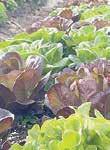

longer be considered in policy making. And in what is perhaps the most far-reaching, long-term change, Zeldin’s agency will attempt to eliminate the EPA’s mandate to regulate greenhouse gases by rejecting the science that shows global warming is detrimental to society, claiming this to be “the holy grail of the climate change religion.”
Funny, I never knew that accepting the scientific findings that greenhouse gases cause climate change was a religion. But maybe that’s just me.
Zeldin’s aspirational goals are not yet settled law or policy. To make them so, the EPA would have to conduct a lengthy series of public hearings and justify the changes on environmental and economic grounds. Or, he can just ask President Trump’s Department of Government Efficiency to fire the people who enforce the agency’s current rules.
Sadly, I’m no longer sure I’ll keep trying to learn something new every day. I might not be able to handle any more surprises.
© Philip S. Wenz, 2025 Lee Zeldin’s video is available for viewing at youtube.com/watch?v=qae9bhymH50.
Philip S. Wenz studies environmental trends and developments.
Note: After 18.5 years of publishing his column under the name “Your Ecological House,” Wenz is now starting a new series entitled “Your Environment.” We hope you enjoy it.
Visit his blog at firebirdjournal.com.



by Kayla Dorsey
Solar power is all around us. We feel it each day as the sun’s energy warms the earth and each summer as we work on our tan.
But there’s another potential application for sunlight that we don’t think about quite as often—one that many in our community are taking advantage of to power their homes—in the form of ‘photovoltaic’ production.
Photovoltaic (PV) technologies, like solar panels, convert radiant energy from sunlight into electrical energy that can be consumed by homes or stored in a battery for later use.
How do they do this, you ask? Well, solar panels are made up of several individual semiconductive cells with both a positive and a negative layer, forming an electric field. When the sun’s energy hits the semiconductors, tiny particles of energy called ‘photons’ collide with electrons and knock them free. As the electrons pass through the layers, they create an electric current. This current then travels along the wires to your inverter, which inverts the electricity from the panels’ direct current (DC) to alternating current (AC) for your home’s consumption.
Any immediate electrical needs your home has get met first. If your home’s demand is greater than the amount of electricity produced by your solar panels, the needed balance will be pulled from the electrical grid or a home battery. This is most likely to occur on cloudy days when the panels aren’t as productive, or in the evenings when the panels aren’t producing at all.
On bright and sunny days when the panels are most effective, your home won’t immediately need all the power being produced by your system. Thus, the extra will be sent either back to the grid for credit or stored in your home battery. These credits will be used to pull power from the grid when your home’s demand is greater than your panels’ production. Depending on your ‘interconnection policy,’ which describes how your
production is credited by your utility provider, credits typically either roll over month to month or get cashed out at their wholesale value.
While home batteries are not a mandatory part of a solar system, it is important to note that, should the electric grid ever go down, your solar panels will only continue to produce power if your home is connected to a battery. When a blackout occurs, your home’s emergency disconnect gets triggered, isolating your system from the grid. With a battery, this turns your property into a microgrid, allowing you to independently continue to produce and consume your own energy. Without a battery, the power produced has nowhere to go, effectively turning off your system. This safety measure protects any utility workers attempting to fix the outage from getting shocked on what are supposed to be dead powerlines.
As the frequent hurricanes in our area tend to cause power outages, many
homeowners who go solar opt to also get a battery, so they can become energy independent. They value the ability to own their own power and not be reliant on the grid. On the other hand, others decide to install only solar panels so they can lower their monthly electric bills. With the current financing terms available, often the monthly payment ends up being lower than the electric bill. And, of course, the monthly payments remain fixed, whereas electric bills tend to increase by a
national average of 3.5%. Locally, within the past couple years, we’ve even seen jumps upwards of 6-8%.
But, of course, there are a lot of variables to consider when deciding whether or not a battery and/or solar are right for you. Contact your trusted, local solar provider to find out whether your home is a good candidate for solar panels. And, please remember to do your research and look at reviews when comparing solar companies to ensure you don’t fall victim to a summertime solar doorknocker.
Kayla Dorsey is Marketing Coordinator for Cape Fear Solar Systems, LLC, which has been installing high quality solar panels, battery back-ups and electric vehicle charging stations in the Cape Fear region since 2007. The company is currently ranked as the number one installer in southeastern North Carolina and the Greenest Contractor in America by Solar Power World, with over 4,500 installations to-date.




Wilmington Earth Day Alliance invites you to the 35th annual Wilmington Earth Day Festival on Saturday, April 26, from noon to 6:00 p.m. in Long Leaf Park. It’s a fun-filled afternoon of live music, good food, environmental information and activities for the whole family—and it’s free!
This year’s theme is “Our Power, Our Planet™.” More than 50 environmentallyminded exhibitors and vendors will be there, explaining issues that affect our environment and illustrating how you can get involved.
Come enjoy live music, dancing on the lawn, food trucks and a Kids’ EcoZone for children to engage in environmental activities. One lucky raffle prize winner will go home with a Hurricane Kayak donated by Great Outdoor Provision Co. There will be recycling and composting stations to help this be a zero-waste event. Bring your own refillable water bottle! T-shirts featuring the 2025 festival logo—designed by Atrox Designs—will be for sale.
“The Earth Day Festival is one of my favorite annual events in Wilmington!” said Wilmington resident Haley Hopkins. “It’s the perfect place to get informed about sustainability and Wilmington’s environment, meet like-minded people, find new volunteer opportunities and enjoy awesome food and music. I look forward to it each year.”
Enjoy live entertainment provided
by Au Naturales, Tercel, and Righteous Roots. The Rapping Red Oak will lead the children’s Nature Brigade Parade at 1:30 and then perform children’s songs. Anyone is welcome to join the Community Drummers and Dancers drum circle at 3:30.
Performance schedule:
12:00–1:30p.m. Au Naturales – Americana and “old school” rock
1:30–2:00p.m. Rapping Red Oak and the children’s Nature Brigade Parade
2:00–3:30p.m. Tercel – Indie rock
3:30–4:00p.m. Community Drummers and Dancers
4:00–5:30p.m. Righteous Roots – Reggae Food trucks on site will be Johnny Cheesehead, A&M’s Red Food Truck, and all-vegan food trucks Well Fed Ed and Arabelle Cookin’. Chocolatey treats will be available from Chocolate and S’more. Beverages available for purchase include beer from Fermental Beer & Wine, Good Hops Brewing, Wilmington Brewing Company and Bill’s Brewing Company; and wine from Noni Bacca Winery. Panacea Brewing Company will sell kombucha and hard kombucha. Culligan Water will provide drinking water, and guests are encouraged to bring their own reusable water bottles. The festival strives to be zero-waste: food scraps will be composted and festival beverage cups will be compostable. Food trucks will offer vegan and vegetarian options and will serve their food in compostable packaging and offer compostable cutlery.
The festival will be held at Long Leaf Park, 314 Pine Grove Drive, Wilmington. Parking is free at the park and at the New Hanover County Senior Resource Center at 2222 South College Road. (The entrance is on Shipyard Boulevard.) Wave Transit will offer fare-free shuttle service between the Senior Center and the Festival all afternoon. In honor of Earth Day, Wave Transit fixed-route bus and RideMICRO services are fare-free all day Saturday, April 26.
Leashed pets are welcome in the grassy areas (not inside the tents or in the food area). Only trained service animals may accompany their humans on the WAVE Transit bus.

FESTIVAL SPONSORS: City of Wilmington Stormwater Services, New Hanover County Parks and Gardens, Heal Our Waterways, Hurricane Kayaks, Great Outdoor Provision Co., Modern Sound and Staging, Atrox Designs, Wilmington Brewing Co., Fermental, Good Hops Brewing, Bill’s Brewing Company, Coyle Solar, Cape Fear’s Going Green, Wave Transit, Wilmington Compost Company and Culligan Water.
For details: wilmingtonearthday.com or (910) 798-7130.

by Leigh McKenzie
WAVE Transit has more than 440 stops in our area between downtown Wilmington and Carolina Beach. Real-time tracking is available on the website, and the app available for download. For regular passengers, the WAVE Transit fixed-route buses have a two-dollar one-way fare per trip. There are other passes available for purchase: a two-ride pass for four dollars, a ten-ride pass for twenty dollars, a 24-hour pass for five dollars, a seven-day pass for twenty dollars and a thirty-one-day pass for eighty dollars. There are reduced fares for eligible patrons. UNCW students can ride the bus for free by showing their student IDs to the bus driver. A RideMICRO one-way pass is also two dollars. These tolls will be lifted on the day of the Earth Day Festival regardless of whether passengers are riding to the festival.
The Wilmington Earth Day Festival will take place at Long Leaf Park on April 26, 2025. Free festival parking is available at the park (314 Pine Grove Drive) and at the New Hanover County Senior Resource Center (2222 South College Road). Farefree shuttles are available between the senior center and the park all afternoon.
WAVE Transit has established rules that prohibit loud music, food and drink, profanity and smoking. This allows for an enjoyable ride for patrons of all ages. Next stops are displayed on a screen at the front of the bus and said aloud for those who cannot see the display. All buses are wheelchair accessible and have designated spaces inside for wheelchair users to sit. The buses are kept clean, and there is availability to store bikes on the front of the fixed route buses in case passengers have one with them.
To ride the WAVE Transit fixed-route buses, track the bus on the app or website and use the online map to find the nearest bus stop. Arrive to the bus stop at least five minutes early and stand close to the pole when the bus is nearby. Pay the fare once you get on the bus and take a seat. If the
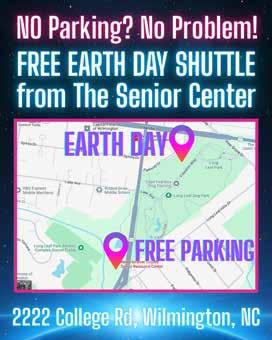
In honor of Earth Day, WAVE Transit will offer free bus rides on all routes, all day April 26, 2025. Free parking for the Earth Day Festival is available at the New Hanover County Senior Center—an easy walk to Long Leaf Park or a free shuttle ride away.
bus is crowded and there are no seats left, there are stability straps hanging from the ceiling to make it easier to stand. When it is time to get off the bus, simply pull down on the yellow cord on the walls of the bus to signal to the bus driver that they need to let someone off at the next stop.

Going Green welcomes editorial contributions from the community. If you have an environmental story you’d like to tell, contact us and we’ll email you our “Contributor Guidelines.” Email Publisher@GoingGreenPublications.com or call (910) 547-4390
May 13, 2025
is the deadline for the summer issue of Going Green. Call (910) 547-4390 for Advertising Rates or Editorial Guidelines.


by Sharon Funderburk
During the weekend of January 17–19, 2025 the first annual Cape Fear Women’s Birding Festival was held in the Wilmington area. Headquarters for the Festival were the Shell Island Resort, while field trips ranged from the Mason Inlet Waterbird Management Area to Federal Point at Fort Fisher. Participants came from as far away as Utah, Colorado, and Minnesota, though most were residents of southeastern states. The Festival website is www.cfwomensbirdingfestival.com and information can be found on Facebook at Cape Fear Womens Birding Festival. Plans are being made now for 2026.
Northern Gannets flash in the low light of late afternoon. They are beautiful birds, wide wingspans, adults white with black wing tips. Brown-feathered young of the year plunge and dip alongside the adults. Gulls of several species swirl through the feeding frenzy as tiny fairy-like Forster’s Terns work the breakers. Here at the northern end of Wrightsville Beach on a clear winter afternoon, these birds have found a rich shoal of fish and they’ve gathered to feed.
On the beach another group has gathered. Some are carrying cameras with long lenses, some have binoculars. All are women. They are watching the birds, trying to capture on film or in memory what is happening before them. The light is perfect. Some are trying out tips they learned earlier in the day in workshops about bird photography; others are watching with new discernment the differences between adult and juvenile, between gull, gannet and tern. They are all participants of the first annual Cape Fear Women’s
Birding Festival, an event designed to provide a safe and supportive environment for women birders to share and develop birding skills while meeting and building connections with other women birders.
The weather has and has not cooperated with their plans. It’s been a warm weekend sandwiched between two bouts of arctic air, which is good, but the warmth has brought rain, which has complicated the field trips. Birding in light rain is not impossible but it can be challenging. With a downpour, well, you just have to go home or huddle under whatever shelter can be found until the rain relents. There were showers and misting rain both Saturday and Sunday but intrepid participants and leaders forged ahead, finding out-ofseason warblers and northern ducks down for the winter. Finding “lifers,” birds seen for the first time in one’s life. Finding the camaraderie of beginner and experienced, sisters, mothers and daughters, newfound friends. In short, it was a blast.
In the end the Festival tallied many species of birds, all in New Hanover County. Winter birding along the southern coast of North Carolina can be very diverse and rewarding. Winter ducks have been pushed south by northern freezes while occasional summer birds linger on in isolated sheltered areas. In one day some participants were able to see an over-wintering Prairie Warbler as well as Harlequin and Long-tailed Ducks. And some, the most favored, were graced with the ap -
pearance of a Heerman’s Gull, a vagrant from the west coast. The bird landed in the midst of the gull flock during a morning field trip, stayed about through the morning, and was last seen flying north nine minutes after the field trip returned to headquarters. Say what you will, it seems like a sign of approval to me.
The second annual Cape Fear Women’s Birding Festival will be held January 16-19, 2026. Watch for registration announcements on www.cfwomensbirdingfestival.com or follow the Facebook page to stay informed. This is a women-inclusive event and we particularly encourage new and young birders to join us.
Sharon Funderburk has birded in North Carolina for over thirty years, where she also farms and writes. It was her great pleasure to participate in the organization of the Cape Fear Women’s Birding Festival.
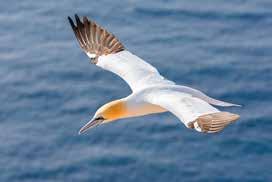
If you’re looking for a new place to walk accessible trails and enjoy bird watching, a good source is the AllTrails website. The site offers feedback from hikers, campers and nature lovers who have explored the areas mentioned. Detailed reviews and photos help you pick the right trail for you and your family.
By way of example, the description of Pages Creek Trail, a 0.9-mile loop trail, says, in part: “Generally considered an
easy route, it takes an average of 17 min to complete. This is a popular trail for birding, fishing, and hiking, but you can still enjoy some solitude during quieter times of day. The best times to visit this trail are September through November. Dogs are welcome, but must be on a leash.”
Visit alltrails.com/us/north-carolina/ wilmington/birding to find a page of “best birdwatching trails in Wilmington.”
Join the Cape Fear Bird Observatory for its inaugural Bird Bonanza on May 3, 2025 from 9 a.m. to 1 pm. at the New Hanover County Arboretum. This free event offers live hummingbird banding demonstrations, family-friendly interactive activities, and an array of exellent local vendors. There will be educational talks, a bird tattoo contest, a scavenger hunt, and a raffle with prizes from local businesses.
Discover the diverse bird species of the Cape Fear region and enjoy a day of learning and fun. For more information, visit the events section of the Cape Fear Bird Observatory website: www.capefearbirdobservatory.org.
Made a resolution to go bird watching more often? You’re in luck! Join Cape Fear Audubon for their new monthly birding program at Burnt Mill Creek! Join Cape Fear Audubon on Saturday, May 3 to watch spring migrants roll in. The event will take place every first Saturday of the month from 9 a.m. to 11 a.m. You are invited to drop in for an outing or two to get you started on your own birdwatching adventure. The event is suitable for all levels, and binoculars are available on request.
Meeting location is the parking lot between Port City Java and Bridge Church, at 2101 Marketing Street in Wilmington. For more information, email contact@capefearaudubon.org.


In 2025 World MIgratory Bird Day will be celebrated May 10 and October 11.
World Migratory Bird Day (WMBD) is officially celebrated on the second Saturday in May as migratory birds journey to nesting sites and on the second Saturday in October as they return to wintering areas. Because birds do not all migrate at the same time and to provide the opportunity to observe birds on stopover sites as they journey, however, we encourage you to celebrate when the timing is best at your location. WMBD programs and events are hosted nearly every month of the year.
Central to World Migratory Bird Day is the artwork that reflects our annual conservation theme. Each year, artists from around the world submit their work to be carefully considered by a panel of reviewers, and one artist is selected.
World Migratory Bird Day 2025 Artist
Annamaria Savarino Drago is the Featured Artist for World Migratory Bird Day 2025. Drago studied biology at the National Autonomous University of Mexico and has been working with birds since 2014, starting as a coordinating member of the Birding Group of the Faculty of Sciences. She did her thesis on Serrano Sparrow ecology in the grasslands of Central Mexico and worked for five years in the North American Bird Conservation Initiative at CONABIO, Mexico’s National Commission for the Knowledge and Use of Biodiversity. She is an avid birder.
Learn how your city or community can become more birdfriendly through WMBD’s series of monthly webinars. Information on these and other resources is on migratorybirdday.org.
How many bird-friendly ideas can you spot in Annamaria Drago’s poster for 2025?
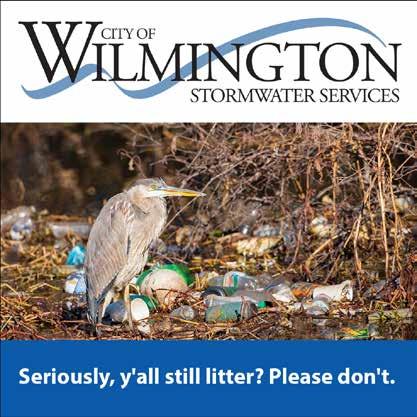
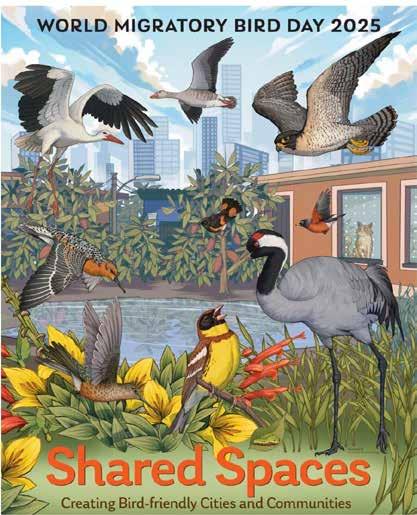
Cape Fear’s Going Green will have an exhibitor table at the following events in Spring 2025. We hope you’ll come chat with us, meet our writers and interns, and let us know what you’d like for us to write about in the coming year.
Sat. April 26 • 12–6 • Wilmington Earth Day Festival Long Leaf Park wilmingtonearthday.com
Sun. April 27 • 1–4 • Bellamy Mansion Family Fun Day Bellamy Mansion Museum bellamymansion.org
Sat. May 3 • 9–1 • Bird Bonanza New Hanover County Arboretum capefearbirdobservatory.org
Sat. May 3 • 9–3 • The OceanFest Soundside Park, Surf City theoceanfest.org
Coming up in the fall: Native Plant Festival, LakeFest, Fire in the Pines Festival, Veg-OUT and the SENC Herbal Conference. Look for us, too, at an occasional farmers’ market! Check our online calendar for details of these and other events: goinggreenpublications.com/calendar.
Cape Fear’s Going Green • Spring 2025
by Carolyn Caggia
Did you know that May is National Bike Month? This celebration of bicycling has been promoted by the League of American Bicyclists every May in the United States since 1956. And it’s observed here in the Cape Fear region, too.
Bicycling is more than just a great way to get exercise outdoors; it’s a way to connect to the community and reduce your carbon emissions by replacing a drivealone trip with bicycling. According to the US EPA, the average passenger vehicle emits 400g of carbon dioxide per mile traveled. By eliminating a vehicle trip and bicycling instead when possible, we can improve air quality and reduce greenhouse gas emissions.
The Wilmington Urban Area Metropolitan Planning Organization (WMPO) works on planning transportation for all needs, including bicycling. Their alternative transportation program, Go Coast, encourages Cape Fear area residents to ride their bikes more often, especially during National Bike Month. Whether for recreation or transportation, Go Coast promotes many resources to help those who are interested in getting out on two wheels more often.

Within the Cape Fear region, there are many places to bike. There are 74 miles of dedicated bike lanes throughout our region’s roadway network, and for those who want to keep off the roads when they bike, plenty of paved trails are available. A great example is the 15-mile Gary Shell Cross City Trail, which traverses Wilmington from Wade Park to Independence Mall, to UNCW and all the way to the bridge leading to Wrightsville Beach. The WMPO describes wide, paved paths like the Cross City Trail as “multi-use paths,” which are suitable for bicycling, walking, pets, strollers and other nonvehicular uses.
Can you bike on the sidewalk? There is no statewide law banning bicycling on sidewalks: it’s left up to towns and cities to set any restrictions. For example, bikes are not allowed on some sidewalks such as the Loop in Wrightsville Beach. If you bike on the sidewalk elsewhere, always yield to pedestrians, politely alerting them when passing at a safe speed, and dismounting your bike to pass, if need be.
Go Coast’s Be A Looker campaign educates drivers, bicyclists and pedestrians on how to share the roads and trails and LOOK for one another. Here are some of the campaign’s other tips for safe riding during Bike Month and throughout the year:
• Always wear a helmet! State law requires helmets for those under age 16.
• When riding in the dark, make sure your bike is equipped (just like a car) with a white front light and a red rear light, so you can see and be seen.
• When riding on the road, ride with traffic on the right side of the street, rather against traffic.
• Obey the rules of the road, stopping at traffic lights and stop signs and yielding to pedestrians.
During Bike Month, Go Coast shares a calendar of events (including the River to Sea Bike Ride on Saturday, May 3!), and a challenge for bicyclists to track their miles ridden on a bike during the month of May. Sign up and learn more about safe bicycling at gocoastnc.org.
Environmental Protection Agency. EPA. https://www.epa.gov/greenvehicles/ greenhouse-gas-emissions-typicalpassenger-vehicle
City of Wilmington, NC. Gary Shell Cross City Trail. https://www.wilmingtonnc. gov/Parks-Recreation/Parks-Trails/ Gary-Shell-Cross-City-Trail
Wilmington Urban Area Metropolitan Planning Organization. Be a Looker. https://www.gocoastnc.org/bealooker/
Wilmington Urban Area Metropolitan Planning Organization. Bike Month 2025. https://www.gocoastnc.org/bikemonth/
Wilmington Urban Area Metropolitan Planning Organization. Bicycle Resources. https://www.gocoastnc.org/ bicycle-resources/
Carolyn Caggia is an associate transportation planner at the Wilmington Urban Area Metropolitan Planning Organization (WMPO). She coordinates the WMPO’s Go Coast program and works to advance alternative transportation in the lower Cape Fear region, including biking, walking, public transit and carpooling. Learn more about sustainable transportation options in the Wilmington area at gocoastnc.org.










Downtown Wilmington’s longest-running Farmers’ Market returned April 12, 2025. This year’s group of vendors features fresh locally-caught seafood, farm to table seasonal fruits and vegetables, pasture to plate meats, mushrooms, freshly baked breads, locally roasted coffee, eggs and honey.
Joining the farmers and producers will be an alternating group of local small business owners that make their own jewelry, soap, candles, home décor and much more. Dog treats, leashes, collars and other items will also be available for our canine friends.
The Riverfront Farmers’ Market (RFM) was established in 2003, when the City of Wilmington was approached by a group of farmers and citizens. City staff operated and managed the market until the market was incorporated in 2010 as a non-profit, taking over management and administration.
Rain or shine, the RFM runs every Saturday April 12 through November 22, 2025. Upwards of 50 vendors line Dock Street between 2nd Street and Water Street from 8:00 a.m. – 1:00 p.m.
RFM is managed by Cool Wilmington and sponsored by Excite Credit Union, WWQQ, WGNI, WMNX, WKXS and WAAV.
For more information see www.riverfrontfarmersmarket.org.
Have you ever tried a CSA? The Community-Supported Agriculture (CSA) model is a marketing model whereby local farmers offer unique farm products to buyers who will subscribe to receive a weekly or monthly box of fruits, vegetables, fresh flowers, eggs, meats, cheeses, or any assortment of local farm products. Through the use of CSAs, customers can develop a caring relationship with a local farm, just by purchasing farm products in advance. Numerous local farmers nationwide and in North Carolina offer this mutually beneficial service. In some cases, multiple farms come together to aggregate their product through multi-farm CSAs.
— NC State University
Veg-Out kicks off its festival to engage and promote a healthy lifestyle, vegan & vegetarian food, nutrition and the environment all in one place on October 18, 2025 at Greenfield Lake at the Rotary Garden in Wilmington, North Carolina.
This free community event is designed to engage and inspire curiosity and to encourage informed decisions on health and well-being. The festival theme is Healthier Eating & Living for a Greener Planet.
All of the food, drinks, products and general merchandise available within the premises of the event must be consistent with a vegetarian or vegan lifestyle, be environmentally friendly and benefit healthy choices.
Veg-Out is currently accepting applications for vendor booths (organic, holistic, vegan, vegetarian, green, cruelty-free products and/or information), guest speakers, cooking demonstrators, select arts and crafts vendors, vegan and vegetarian food vendors, non-profit organizations and more. Any food truck or concession that sells vegan or vegetarian food is encouraged to apply.
Applications are available at the Veg-Out festival website: www.veg-out.org.
The Nursery at Herbs | Natives | & so much more
"We grow using organic & permaculture practices on a century farm."
340 Goodman Rd NE, Leland, NC
Open Year-Round Mon-Sat 9am-4pm 910.253.5964 | www.SheltonHerbFarm.com


We're more than just Saturdays! Starting April 22nd - Earth Day


Tuesdays from 4pm-8pm
Tidal Creek Co-op 5329 Oleander Dr.
Welcome to Going Green’s recipe page, where we bring you new ideas for how to enjoy local and seasonal foods. For the purpose of this page, “local” includes North and South Carolina.
The most well-known dishes from the Levant region are hummus, tabbouleh, baba ghanouj and falafel. After all, the word “hummus” is an Arabic word meaning “garbanzo beans.” However, there is another wonderful dish from the Levant region I’d like to introduce you to. It is a delicious dish called “maqluba,” which literally means “upside down.”
The essence of maqluba is that it’s made with a variety of vegetables but it is definitely not a stew. The intent is to maintain the uniqueness of each vegetable layer, preserving each texture and flavor while giving it a common seasoning that unites all the ingredients. The vegetables,
which can be potatoes, eggplant, cauliflower, peas, carrots or others, are layered in a pot, then topped with rice. Once cooked, the pot is flipped over—hence the name maqluba—and, if cooked properly, maintains its shape like a cake when the pot is lifted off.
The most popular composition of maqluba, and the one I’ve provided the recipe for, is layered with garbanzo beans, potatoes and eggplant, and topped with rice.
I’ve flipped so many maqlubas at this point, it doesn’t really scare me that much, but imagine slaving away in front of a pot for hours, then flipping the pot, missing the tray, and spilling the contents all over the table and floor. It’s better to practice it a few times before a prime time performance in front of guests. Also, the ideal pot is short and wide (with a lid) to reduce the height of the maqluba and reduce the likelihood of it collapsing when the pot is lifted.

Ingredients
• 1 can garbanzo beans
• 2 tomatoes
• 2 potatoes
• 1 eggplant
• 2 cups basmati rice
• 3 tsp+ allspice
• 2 tsp+ salt
• olive oil
Instructions
**Note: Season each layer generously with salt and allspice, seasoning the water before adding it to the rice.
1. Start with broiling the vegetables. Cut the potatoes and eggplant into 1/4 -inch cross-sections. Put the cut potatoes and eggplant in separate mixing bowls. Mix each with 1 teaspoon of salt, 1 ½ teaspoons of allspice, and a tablespoon of good olive oil. Then put each type of vegetable separately in a single layer on a cookie sheet and broil for about 20 minutes, flipping halfway through. Cooking time may vary but you want to make sure each vegetable has a light brown crust that forms a protective layer for the vegetable’s texture during the cooking process.
2. Start layering the pot. First, coat the bottom of a large pot with olive oil. Next, line the pot with cross-sectional tomato slices. Add 1 ½ cups (about a can) of garbanzo beans in an even layer. On top of the garbanzo beans, layer the broiled potatoes evenly, and then add an even layer of the broiled eggplants. Finally, spread 2 cups of uncooked basmati rice evenly on the top. Remember to season each new layer as you add it to the pot (except the eggplant and potatoes, which have already been seasoned). Press a spatula down on the top of the ingredients to compress everything while not disturbing the distinction between layers.
3. Add the liquid. Mix together 1 ½ teaspoons of allspice and 1 teaspoon salt with 4 cups of hot water. Very slowly, add 3 cups of the mixture to the edge of the pot, being very careful not to disturb the
layering, which would turn the dish into a vegetable stew. Keep adding water until it barely but completely covers all the rice. Cover the pot and bring to a very slow boil, then simmer on low heat for 20 minutes.
4. Halfway through, use the spatula to compress all the ingredients again. You may need to add some of the 4th cup of liquid to the pot so that all the rice is covered. Do not add plain water! Make sure any water you add has been mixed with salt and allspice and before adding it to the pot.
5. Once all the water has been absorbed, turn the heat off and let the pot cool for at least 10 minutes. If there is ANY liquid left on the bottom of the pot, you are not done and will need to keep cooking until it’s all absorbed.
6. Remove the pot lid and cover the pot with a round serving tray. Then, in one quick motion with the tray pressed firmly over the pot, flip the pot and serving tray. If the maqluba is cooked properly, you should be able to lift the pot, leaving the ingredients standing like a cake in the shape of the pot.
7. Enjoy! Maqluba may be enjoyed as is—or try topping it with tomato-cucumber salad for added freshness.
Maad Abu-Ghazalah is the owner of Arabelle Palestinian food cart, which serves mezzes and other vegan Palestinian dishes. He moved to Wilmington in 2023 after spending most of his life as an entrepreneur in Silicon Valley, as he yearned for a community atmosphere that was lacking in California. Abu-Ghazalah is also the owner of the Daily Hugz animal rescue in the West Bank, which cared for 70 dogs and 15 donkeys until the war broke out in 2023 and the dogs had to be evacuated to the U.S. Learn more about his food at https://www.arabellecookin.com.
Have you tried one of our recipes?
We’d love to see a photo! Email us at publisher@goinggreenpublications.com.
The North Carolina Wildlife Federation has announced the winners of the 60th Annual Governor’s Conservation Achievement Awards. Honorees for 2025 include agency professionals, elected officials, volunteers and organizations committed to North Carolina’s wildlife, habitat, and natural resources.
NCWF will honor the award recipients, including the wildlife enforcement and marine patrol officers of the year, at a banquet on Saturday, May 3rd at Embassy Suites in Cary, NC. (RSVP and purchase tickets for the 60th Annual Governor’s Conservation Achievement Awards.)
“The stunning variety of North Carolina’s wildlife and wild places is only matched by the commitment to conservation evident in our award winners,” said T. Edward Nickens, NCWF awards committee chair. “We are always amazed at the people we discover who have gone above and beyond to work for conservation. This year’s slate of honorees is yet another example of the deep love North Carolinians have for the natural world, and their steadfast hard work on behalf of the birds, fish, wildlife, parks, forests, beaches and waterways that enrich our lives.”
These annual awards provide a platform to highlight inspiring wildlife conservation efforts across North Carolina, with the goal of encouraging active participation in safeguarding the state’s natural resources for the well-being of future generations.
2025 Governor’s Conservation Achievement Award Recipients
Conservationist of the Year – Cameron Ingram (Climax)
Wildlife Conservationist of the Year – Anton Michael “Mike” Wicker (Pinehurst)
Sporting Family of the Year – Matt, John, and Sarah Barringer (Gold Hill)
Land Conservationist of the Year – Amy and Ruth Ann Grissom (Charlotte)
Water Conservationist of the Year – Coastal Carolina Riverwatch (Morehead City)
Forest Conservationist of the Year – Robert Thomas (Thonotosassa, FL)
Marine Resource Conservationist of the Year – Benjamin McNinch “Mac” Currin (Washington)
Young Conservationist of the Year – Deja Perkins (Raleigh)
Environmental Educator of the Year – Dr. Clyde Sorenson (Raleigh)
Conservation Organization of the Year –
Triangle Land Conservancy (Durham)
Legislator of the Year – Representative Steve Ross (Alamance)
Business Conservationist of the Year –Carolina Native Nursery (Burnsville)
Natural Resources Scientist of the Year –Bryn Tracy (Apex)
Wildlife Volunteer of the Year – Dr. Jin Bai (Durham)
Public Lands Conservationist of the Year –Marquette Crockett (Asheville)
NCWF Chapter of the Year – NCWF Wildlife Habitat Stewards of Northeastern NC Chapter (Elizabeth City)
NCWF Affiliate of the Year – Gardening for Wildlife Committee, Cape Fear Garden Club (Wilmington)
Wildlife Enforcement Officer of the Year –Master Officer Eric Crouse (Ronda)
Marine Patrol Officer of the Year – Officer Candace Rose (Seven Springs)
Learn more about these individuals at ncwf.org/blog/governors-awards-60.
Editor’s Note: We elected to run the entire list rather than just the names of honorees from the lower Cape Fear, as a reminder that there are people across our state devoting energy to the environmental causes that are important to them.
Green
This year’s Race for the Planet is on Sunday, April 27, 2025. It includes the following events: a Run for the Planet 5K, a Run for the Planet VIRTUAL 5K, and a 1 Mile Fun Run (Timed). All race proceeds support the North Carolina Aquarium at Fort Fisher Green Team through the North Carolina Aquarium Society!
There will be three great race options. The virtual component of the race will allow you to participate in the run from anywhere on Earth, and the event will attract 10,000 runners from all over the planet.
The 2025 Race for the Planet welcomes racers of all skill levels with a fun, no-pressure atmosphere to do something healthy for themselves and for the planet.
Have enough T-shirts to last a lifetime? Check the NO SHIRT option under T-shirt size and $10 of your registration fee will support the NC Aquarium at Fort Fisher through the North Carolina Aquarium Society. Donations fund the Aquarium’s sustainability initiatives—reducing the carbon footprint of the event and expanding programs to eliminate single-use plastic, tackle hardto-recycle materials and enhance organic waste composting.
Learn more and register for the event at https://www. ncaquariums.com/2025-race-for-the-planet.
“A good little bookstore… is a laboratory for our coming together.”
Ross Gay
“I love walking into a bookstore. It's like all my friends are sitting on shelves, waving their pages at me.”
Tahereh Mafi
ALL our current and back issues are available online! Go to our home page, www.goinggreenpublications.com, and click on any of the covers to pull up the most recent issues or our recipe booklet. Select the green “VIEW ARCHIVE” button to view our entire catalog of issues.
In the Community
Pick up a free copy at one of the locations listed below or at in-person meetings of environmental groups as they return to meeting live.
Arboretum/New Hanover County Extension Service, Aunt Kerry’s Pet Stop, Lovey’s Market, Old Books on Front Street, Pomegranate Books, Tidal Creek Co-op, UNCW, Shelton Herb Farm, area public library branches and many area Food Lion and Harris Teeter locations. See https://arcg.is/1WWi0y for online map.
Subscribe
For the price of postage and packaging, you can receive the next four issues in your own mailbox. Mail a check payable to “Going Green Publications” in the amount of $24 to P. O. Box 3164, Wilmington, NC 28406.
Back issues of Cape Fear’s Going Green are available by calling us at (910) 547-4390.
Sign up for our email list to be alerted when each new issue becomes available. Email us at publisher@goinggreenpublications.com.
SEND US YOUR NEWS ITEMS!
We love to hear from our readers. Email us at editor@goinggreenpublications.com.

Recently, the Marine CSI: Coastal Science Investigations program made a move to expand its reach westward into Bladen and Duplin Counties, and it has paid off. Led by Owner and Director of Education, Kimberly Belfer, Marine CSI’s Watershed Walkabout program introduces students in K–12 to not only our beautiful coastal ecosystems, but the conservation of the wildlife found therein. By utilizing her 20+ years of knowledge and experience in outreach education, she visits schools from Brunswick to Onslow Counties from September through May, bringing a wide variety of hands-on activities for grades that request her watershed program.
This school year, the expansion west gave Belfer an opportunity to talk about coastal processes, like pollution concentration from upriver to downriver, as well as where the food web begins with microscopic plankton. In Bladen County, she educated all of Bladenboro Middle School’s students (from grades 5 through 8), with an entire week’s programming. And in Duplin County, students in the 5th grade at Chinquapin Elementary School got a first-hand look at
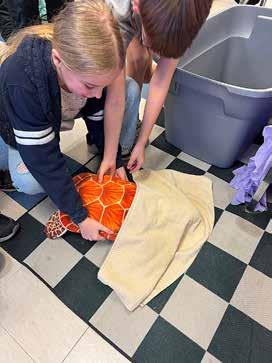
wildlife rescue and rehabilitation on our beaches, by working in “rescue teams” to carefully transport marine mammals and reptiles.
This expansion opens up more opportunities for Belfer to bring coastal investigative activities to area schools that are within the Cape Fear River Basin. Her hope is to shed light on conservation issues throughout the basin and encourage young people to care about the environment they live in, the same way she was encouraged at their age. Bringing the Watershed Walkabout program to schools not only saves districts the costs of full-day field trips, but provides individual focus, so students feel they are receiving Belfer’s undivided attention throughout the program.
For more information on the Watershed Walkabout program and to schedule an upcoming date on the program’s calendar, go to: www.teachmarinecsi.com/ watershed-walkabout-cape-fear.
Kimberly Belfer is the founder, owner and Director of Education for Marine CSI: Coastal Science Investigations.




Over the past few years, rising parking fees and restrictive policies have made it increasingly difficult for locals to enjoy our coastal areas. If it’s not affordable, it’s not truly accessible.
In just 72 hours, the Wrightsville Beach Surf Mamas’ petition to restore free beach parking after 5 p.m. gained more than 4,000 signatures—proving just how much this issue impacts our community. (See @ wbsurfmamas.)
Surfrider Cape Fear is also looking for groups, organizations and businesses that depend on free parking hours and whose representative is willing to write letters of support. Interested parties can email Surfrider Cape Fear Vice Chair Sam Athey at vicechair@capefear.surfrider.org.








Surfrider stands for equitable beach access, and they support finding a balanced solution that keeps our beaches open to all.
Surfrider Cape Fear is hosting its ninth annual Coastal Recreation Congressional Hill Day on May 14-15 (virtually). This exciting event brings Surfrider volunteers, coastal community members and the surf industry face to face with their federal representatives to encourage bold protection of our ocean, waves and beaches. If there’s any relevant ocean- or coastal-related federal policy action that you’d like to bring up in these meetings—as it aligns with the Surfrider Cape Fear mission—please contact Surfrider Cape Fear Vice Chair Sam Athey at vicechair@capefear.surfrider.org.
Find more opportunities and information on capefear.surfrider.org.
is the deadline for the summer issue of Going Green. Call (910) 547-4390 for Advertising Rates or Editorial Guidelines.

The Women’s Impact Network of New Hanover County (WIN) provides grants to nonprofit organizations whose missions, goals, projects and services are intended to impact the New Hanover County community positively.
Members’ dues create the available pool of grant money, a concept called collective giving. In collective giving, people with a common commitment to their community come together and pool their resources to support shared causes. Members using the power of collective giving can achieve a greater impact than they might through individual giving.
Collective giving also offers the additional benefits of a higher level of member awareness of the most pressing needs of their own community, stronger member engagement and closer social connectivity.
WIN was created in 2011 by a group of women passionate to make a difference in their local community. They pooled their
wholewatersolutions.co 910.622.5620

Quality drinking water in our community is the heart and sou Whole Water Solutions We pro bottled water quality drinking w at your tap affordably, so you c feel good about the water you'r drinking and the plastic waste you're avoiding
Under sink RO system with inst $415
resources and, through the New Hanover County Community Foundation, made their first grant in 2012 for $20,000. After five years of broad-based giving and with a growing grants pool, WIN members decided to award grants in four different categories, rotating through one each year. This rotating grant focus allowed WIN members to learn more about needs in each category, as well as have greater impact. In 2016, WIN members identified four areas of concern—environment, arts & culture, education and health & wellness—and decided to award grants in a different category each year.
The environment was the category for selecting 2024 grantees. The grantees were as follows.
Cape Fear River Watch received $20,000 for its project—The Burnt Mill Creek Urban Green Space Restoration Plan—which will protect and improve water quality in the Cape Fear River Basin.



North Carolina Wildlife Federation: $15,000 for restoring wildlife habitat in underserved communities through five clean-up and planting projects.
Alliance for Cape Fear Trees: $8,400 for its project to improve tree survival success in disadvantaged communities.
Young Scientist Academy: $6,600 for the Youth Cause Initiative that mentors students and teachers to reduce their school’s carbon footprint.
Historic Wilmington Foundation received $5,000 for Eagles Island Nature Park Project.
Plastic Ocean Project: $5,000 for their Trees4Trash program and Carbon Capture Study, which addresses critical issues of marine debris and climate change.
WIN’s impact in our community can be seen in the list of previous grant recipients, posted on their website: winofnhc.org.
Source: winofnhc.org.

Do you have exciting environmental news? Let us know! E-mail us at editor@goinggreenpublications.com.
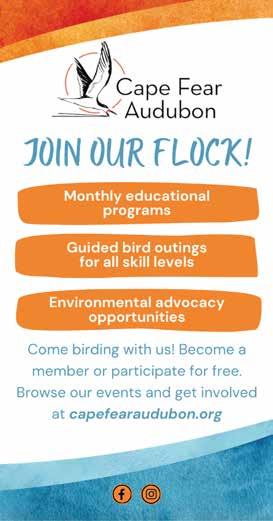
Abby Crowe has taken on the task of organizing Wilmington’s Green Drinks program. The purpose of this after-work social time is to allow like-minded sustainability professionals and enthusiasts to network, collaborate and connect. A typical meeting includes a presentation by local environmental professionals along with ample time to network with fellow attendees.
Green Drinks is an international program with chapters in more than 60 countries. The Wilmington chapter meets the last Tuesday of each month from 6–8 p.m. at Waterline Brewery, 721 Surry Street, Wilmington, 28401. Learn more about Wilmington Green Drinks at https:// www.greendrinks.org/NC/Wilmington or contact Crowe at greendrinkswilmington@ gmail.com or phone (614) 824-7432.
Many young people under the age of 18 are looking for meaningful ways they can volunteer. If your organization offers opportunties for teenagers (or even younger), send us your information and we’ll add you to our list.
All of our current and back issues are now available online! Go to our home page, www. goinggreenpublications.com, and click on any of the covers to pull up recent issues. Select the green “VIEW ARCHIVE” button to view our entire archives.
Pick up a free copy at one of the locations listed below or at in-person meetings of environmental groups as they return to meeting live.
Arboretum/New Hanover County Extension Service, Aunt Kerry’s Pet Stop, Lovey’s Market, Old Books on Front Street, Pomegranate Books, Tidal Creek Co-op, UNCW, Shelton Herb Farm, area public library branches and many area Food Lion and Harris Teeter locations. See https://arcg.is/1WWi0y for online map.
Subscribe
For the price of postage and packaging, you can receive the next four issues in your own mailbox. Mail a check payable to “Going Green Publications” in the amount of $24 to P. O. Box 3164, Wilmington, NC 28406.
Back issues of Cape Fear’s Going Green are available by calling us at (910) 547-4390. Sign up for our email list to be alerted when each new issue becomes available. Write us at publisher@goinggreenpublications.com
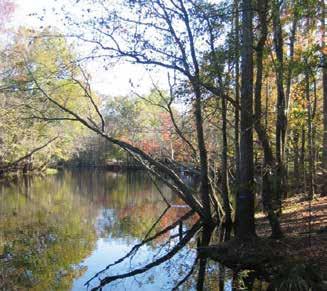




by Shannon Bradburn
Rebecca Patman has expanded her offerings at The Garden Shop on Moss by adding a classroom space with a potting bar. Customers now have a variety of options for bringing potted plants into their living space: They can bring their own pot to get design ideas and buy plants, or purchase a container on site. Customers find they enjoy potting their own plants in the ample workspace. Patman will do the potting for them if
they don’t have the time or the inclination to do it themselves. Customers who do not wish to bring a pot they already own will find a nice selection of pots available for sale on site.
Brie Arthur, author of The Foodscape Revolution: Finding a Better Way to Make Space for Food and Beauty in Your Garden, spoke at the New Hanover County Arboretum on February 5. She came bearing some startling news: most of the food we eat has to travel halfway around the world before it ever reaches our grocery store. The transport cost of food alone is over five tons of greenhouse gases annually, which is about 11% of the total greenhouse gases produced for us to eat three meals a day.
idea of what a garden is and how to maintain it. We have all seen the wayward raised beds surrounded by lumber. That is not foodscaping that is really just frustration waiting to happen.
The shop is open from Wednesday through Sunday and is located at 1942 Moss Street in Wilmington, near where Wrightsville Avenue turns into Castle Street. Learn more at thegardenshoponmoss.com or call or text (910) 690-0452.
What can we do? We have to eat, and ideally we eat three times a day. Well, that is where Brie Arthur comes in.
Foodscaping is the practice of planting edible plants with your native plants and ornamentals. This creates a more diverse ecosystem where the plants are less likely to be affected by disease and pests. You also gain more from your garden than just pretty flowers though we cannot overlook the importance of pollinators. But, guess what? Pollinators like edible plant flowers too.
Foodscaping is taking the space you already have and utilizing it. Let’s say you have some shrubs in your front yard with mulch in between. If you remove that unnecessary mulch space and instead plant a nice ground-covering edible—such as strawberries you are not only saving money on mulch, you are adding a very pretty ground cover with a nice flower to your yard. Oh, and let’s not forget the yummy strawberries that you will now have.

Native plant expert Duane Truscott has returned to Wilmington and is developing a native plant nursery, primarily from seed. In the future the nursery will offer trees, shrubs, perennials and vines that are indigenous to our area. He now offers classes on native plants and plant propagation at The Garden Shop on Moss, and is currently cochair of the Southeastern Coastal chapter of the NC Native Plant Society.
Foodscaping is a concept that can be completed virtually anywhere. If you live in a place with an HOA you typically are not allowed to have a “vegetable garden” in your front yard. This is because most people in the U.S. have a very outdated
”At this age and stage in my life I am looking out for the future of indigenous species for the coastal plain,” says Truscott. “I look forward to helping people find the plants that they want for their yards.” Learn more by emailing Truscott at duanetruscott@gmail.com.
Brie Arthur discusses the practicality of utilizing space. She expxlains that the most underutilized space in any yard or garden is the edge. This is your ideal place to help with pest management and contribute to reducing your carbon footprint. Edge plants include garlic, arugula, potatoes, and much more. You can plant these in the space between a walkway and grass no more edging or weed control for your walkway. You can plant these beside your house, garage, or where your garden meets the lawn space. Not only are edge plants easy to grow, they also are deterrents for deer, rabbits, moles, and voles. You will be protecting your other


plants, using less chemical repellents, and providing food for you and your family and neighbors.
• Want to learn more about native plants?
• Go on plant walks with knowledgable experts?
• Meet folks who share your interest?
Foodscaping not only offers you a way to reduce the transport cost of food, it also provides you with an easy way to teach children about gardening. We, as a society, have reached a point where gardening is no longer a task that is passed down from generation to generation. Most children do not know where their food comes from. Actually, most college students do not know where their food comes from. Nor do they know the first thing about planting. If edible plants are integrated into areas where children and others have readily available access like public parks, schools, churches, government buildings it would be very hard for the next generation not to soak up a little bit of knowledge about growing their own food. But this will only become a reality if we as the general gardening public make foodscaping a social norm.
Learn more about Brie Arthur at www. briegrows.com.
Shannon Bradburn is a senior at UNCW who loves to hike, study plants, and play outside.
The North Carolina Native Plant Society offers plant walks, workshops and other plant-related activities. To receive the schedule of events, go to www. ncwildflower.org to join the state-wide NC Native Plant Society. Based on your address, you will automatically be assigned to a local chapter. Those in the SE portion of the state automatically become members of the SE Coastal Area Chapter. For more information, email cewinterbauer39@gmail.com.
We welcome guest contributors. Write for our contributor guidelines. editor@ goinggreenpublications.com.

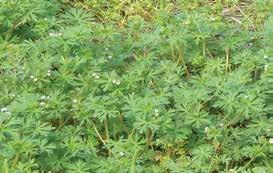

Going Green has been fortunate this year to have three interns to help out. All have worked with the magazine through their 2025 Spring semester, but you are likely to see them at upcoming shows and read their work in future issues of the magazine.
Emily Allen is a senior at UNCW, , majoring in Environmental Science with a concentration in Conservation Biology. At UNCW, she has focused on sustainable agriculture, integrated pest management, and reducing forest fuels. During her internship with the USDA, she worked as part of a backcountry trail crew in Sequoia National Forest, gaining certification in the use of crosscut saws and other hand tools. She later began working as a teaching assistant at UNCW for Dr. Eric Moore’s Agriculture in the Environment course. She developed and taught lesson plans encouraging students to tackle agricultural challenges like wildfires and pests with creative, sustainable strategies. She also facilitated discussions on animal agriculture, guiding students through critical analysis of federal versus state policies and the impacts of CAFO facilities on surrounding communities.
Maya Dulli-Ray is studying Communication at the University of North Carolina Wilmington. She is also double minoring in two of her biggest passions, Journalism and Coastal and Environmental Writing. Maya dreams of working with National Geographic one day and traveling the world. In her free time, she enjoys spending time with loved ones, listening to music and spending time outdoors.
Leigh McKenzie is a senior at the University of North Carolina Wilmington (UNCW), graduating with her BFA in Creative Writing, a Certificate of Publishing, and a minor in Spanish. She enjoys the outdoors, swimming and learning new and creative ways to express herself. After graduating, she hopes to travel the world and write novels.


economy.

All of our current and back issues are now available online! Go to our home page, www. goinggreenpublications.com, and click on any of the covers to pull up recent issues. Select the green “VIEW ARCHIVE” button to view our entire archives.
In the Community
Pick up a free copy at one of the locations listed below or at in-person meetings of environmental groups as they return to meeting live.
Arboretum/New Hanover County Extension Service, Aunt Kerry’s Pet Stop, Lovey’s Market, Old Books on Front Street, Pomegranate Books, Tidal Creek Co-op, UNCW, Shelton Herb Farm, area public library branches and many area Food Lion and Harris Teeter locations. See https://arcg.is/1WWi0y for online map.
Subscribe
For the price of postage and packaging, you can receive the next four issues in your own mailbox. Mail a check payable to “Going Green Publications” in the amount of $24 to P. O. Box 3164, Wilmington, NC 28406. Back issues of Cape Fear’s Going Green are available by calling us at (910) 547-4390. Sign up for our email list to be alerted when each new issue becomes available. Write us at publisher@goinggreenpublications.com
All the words in the crossword can be found somewhere in the pages of this issue. The answer key appears on page 26.
4/21/25, 2:21 PM Crossword - Crossword Labs
Across
3. a heavy rainfall
7. a fermented, slightly fizzy, and sweetened tea drink
8. the action of restoring an animal to health or normal life through training and therapy after imprisonment, addiction, or illness
11. plant in a flowerpot
12. a Middle Eastern dish
13. an American marsupial which has a naked prehensile tail and hind feet with an opposable thumb
15. a powerful and destructive storm that affects an unusually large area.
16. the process whereby the character of a poor urban area is changed by wealthier people moving in, improving housing, and attracting new businesses, typically displacing current inhabitants in the process
17. not involving or relating to vehicles, particularly road vehicles
Down
1. a transparent tank of water in which fish and other water creatures and plants are kept
2. a small network of electricity users with a local source of supply that is usually attached to a centralized national grid but is able to function independently
4. relating to the production of electric current at the junction of two substances exposed to light
5. at or near boiling point
6. a country in West Asia
9. the rubbing and kneading of muscles and joints of the body with the hands, especially to relieve tension or pain
10. a local transit system with more than 440 stops in our area
14. a sum of money given by a government or other organization for a particular purpose
Crossword by Shelby Diehl.
a small network of yelectricit users with a local source of supply that is usually attached to a edalizcentr national grid but is able to function
ansparenttr tank of aterw in which fish and other aterw creatures and plants are eptk
8. the action of restoring an animal to health or normal life through ainingtr and yapther after imprisonment, addiction, or illness
7. a fermented, slightly ,fizzy and sweetened tea drink
Answer Key for the Crossword on page 25.
3. a vyhea ainfallr
11. plant in a flowerpot Down
The second Tuesday of every month.
Come join us 6–8 p.m. at Old Books on Front Street • 249 No. Front Street • Wilmington
Now in its fourteenth year, the Environmental Book Club is organized by Cape Fear’s Going Green and hosted by Old Books on Front Street. Our Book Club meets the second Tuesday evening of the month inside Old Books on Front Street. Social time is at 5:30, and discussion begins at 6:00 and runs approximately two hours. The bookstore closes at 8:00 p.m. There’s no longterm commitment—you can come when the book being discussed is a title that interests you! (We do hope you’ll read the book before you come, as it enriches the conversation.)
We will continue offering the hybrid Zoom + in-person gathering we started during the pandemic as long as enough people express interest in attending virtually. We do ask that you RSVP every month to let us know whether to save



you a chair or send you the Zoom link. RSVP by email to Valerie_L_ Robertson@msn.com or call Valerie at (910) 547-4390.
Sign up for the Going Green newsletter, and let us know if you’d also like to be on the email list for Environmental Book Club news. Email Publisher@GoingGreenPublications. com or sign up directly on our website: GoingGreenPublications.com. Questions about Book Club? Call (910) 547-4390
Cape Fear’s Going Green • Spring 2025

Old Books on Front Street offers a discount on new copies of our Book Club selections (and to anyone arriving by bicycle). Call ahead to make sure the book you want is in stock: (910) 762-6657.
NOTE: Any changes to the schedule (for weather or any other reason) will be posted on our online calendar. To make sure we are meeting, please visit the online calendar at www. GoingGreenPublications. com on the day of the event. Click on the meeting date to pull up details. Or call us at (910) 547-4390.
Sign up for the Environmental Book Club mailing list, and we’ll share details about this year’s books as well as tips for accessing them as audiobooks or eBooks through New Hanover County Public Library, using Hoopla or Libby.
Every fall we select the books we’ll discuss in the coming year. Our 2025 titles are listed to the right. Below are three titles we thought looked very interesting, though we didn’t have room for them on the current year’s list. They will be available from Old Books on Front Street:
The Ministry for the Future
Kim Stanley Robinson
Looking for Longleaf: The Fall and Rise of an American Forest
Lawrence S. Earley
On the Swamp: Fighting for Indigenous Environmental Justice
Ryan E. Emanuel
January 14, 2025
The Intersectional Environmentalist: How to Dismantle Systems of Oppression to Protect People + Planet
Leah Thomas
February 11
Wastelands:
The True Story of Farm Country on Trial Corban Addison
March 11
Nature’s Best Hope: A New Approach to Conservation that Starts in Your Yard
Douglas W. Tallamy
April 8
The Comfort of Crows: A Backyard Year
Margaret Renkl
May 13
Natural Magic
Renée Bergland
June 10
For All the Tea in China: Espionage, Empire and the Secret Formula for the World’s Favorite Drink
Sarah Rose
July 8
Cobalt Red: How the Blood of the Congo Powers Our Lives Siddharth Kara
August 12
Crossings: How Road Ecology Is Shaping the Future of Our Planet
Ben Goldfarb
September 9
Cat Tale: The Wild, Weird Battle to Save the Florida Panther
Craig Pittman
October 14
What If We Get it Right: Visions of Climate Futures
Ayana Elizabeth Johnson
November 11
Mini-Forest Revolution: Using the Miyawaki Method to Rapidly Rewild the World
Hannah Lewis ( foreward by Paul Hawken)
December 9
What an Owl Knows:
The New Science of the World’s Most Enigmatic Birds
Jennifer Ackerman
January 13, 2026
Gathering Moss: A Natural and Cultural History of Mosses
Robin Wall Kimmerer

AdobeStock_1266126793
Virginia Opossums come in many different colors, from light gray to dark brown or even black.
Virginia Opossums (Didelphis virginiana) are native to the Cape Fear area. They are the only opossums in North America. These amazing little animals live in much of the United States, Mexico and Canada. They are in the marsupial family, meaning they have pouches where their young grow. The mothers provide milk for their babies like mammals, but baby opossums are born before they can survive independently. When they are born, they are so small that they look like little grains of rice. After birth, these blind little babies find their way up their mom’s belly and into the safety of her pouch, where they will grow into opossums that can thrive on their own.
When you think of an opossum, you may think of something with a long naked tail and big teeth, eating out of a dumpster. But these animals are so important for our environment! Opossums are the top predator of ticks, so they help keep people and pets safe from illnesses like Lyme Disease. These amazing marsupials are about the same size as an average house cat, but their long noses and scaley tails set them apart from the house cat. Humans have opposable thumbs. Opossums also have opposable thumbs, on their hind feet. This means that they can grip with their hands like you can, unlike a dog with no thumbs. Opossums use their thumbs to help them climb trees, dig for bugs, and clean themselves. Kid’s Korner is brought to you by Shannon Bradburn Pragosa.
Which of the following animals is a marsupial?
Kangaroo Raccoon Pig
Opossums are generally nocturnal. This means they spend most of their day resting in hollow logs, in holes that other animals have dug, or even under houses. You may occasionally see them during the daytime, but for the most part, you will see them out at dawn and dusk. Since opossums love to live in hollowedout trees and stumps, Wilmington is a nice place for them to live. The mature pine forests and protected natural areas in Wilmington and surrounding areas make for great habitats.
Opossums carry rabies (a disease that is very dangerous to people and pets)
Opossums must have space to survive. They are solitary animals, meaning they prefer to live alone. They travel over long distances each night, and ideally, an opossum would have at least 20-50 acres to roam. This is a big problem for opossums because most of the natural spaces in the U.S. have roads running through them. This makes travel extremely dangerous for opossums. While bobcats, dogs, coyotes and other predators eat opossums, many of these little creatures are killed by cars. Making sure that you promote the protection of green spaces is very important to help opossums remain in our area.
Opossums are often seen as pests, so they are trapped, poisoned, and killed when they get too close to people’s homes. While opossums may look mean, they are not outwardly aggressive animals. Their main defense is to hiss and “play dead.” They do this by staying still, not blinking and sticking their tongues out to the side. They are extremely important to the ecosystem because they eat bugs, dead animals, and rodents. However, opossums are opportunistic eaters, meaning they will eat just about anything they find. Due to their unique diet and rapid aging, they only live about two years in the wild. Captive opossums, like those at Nature Centers or Zoos, can sometimes live up to four years.
Always remember: opossums are wild animals and should not be kept as pets. Baby opossums have to eat a very specific diet, to keep them from developing a painful disease called Metabolic Bone Disease. If you ever see a baby opossum—or find injured wildlife of any kind—call a wildlife rehabilitation organization immedidately. Talk with the rehabber before you touch the animal or give it food or water: she or he will give you guidance to keep it safe.

Opossums use their opposable
them climb trees safely.
Answer